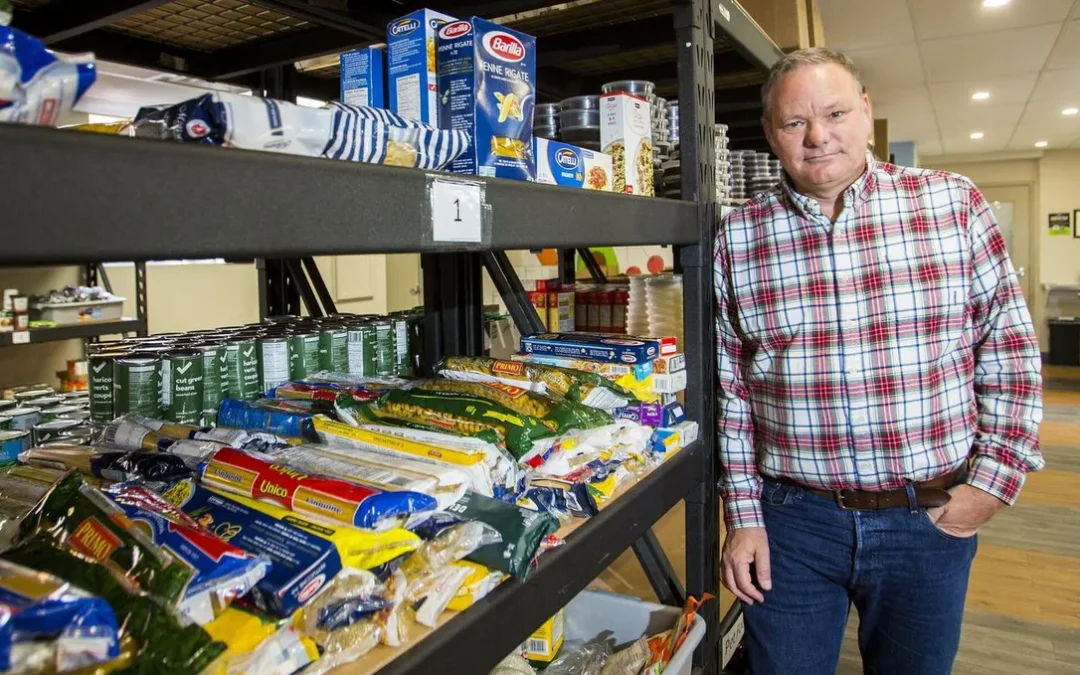Food bank usage has increased significantly in the Niagara region over the past two years due to the COVID-19 pandemic and inflation — and it shows no sign of letting up.
Niagara is home to about 30 food banks, many of them seeing more people impacted by food insecurity.
Food banks have seen an overall increase in service of about 45 per cent, putting a strain on donations and the ability to provide emergency food to people when they need it.
“This year, particularly the last six months, we’re seeing record numbers,” said Jon Braithwaite, chief executive officer of The Hope Centre in Welland.
“We’ve never seen the number of people in our food bank in a month as we are now. If you look at our last three months compared to the same time in 2019, the number of kids we’re serving is up 35 per cent.”
He said the number of people accessing the food bank has almost doubled during the same period.
“Pre-pandemic, we had about 2,100 clients, now we are just over 4,000,” he said.
Similarly, Project Share executive director Pam Sharp said significant increases are being seen in Niagara Falls as more people visit the food bank to get what they can’t afford.
“Our September statistics are at an alarming 84 per cent increase in clients served over September 2021,” she said.
Sharp said that amounts to about 3,000 unique individuals served in September 2021 to just more than 5,700 served in September 2022.
“In the first four months of our current fiscal year (beginning June 1, 2022) we have seen 1,199 new clients access our emergency support services for the very first time,” she said.
Said Braithwaite, the need for help is increasing and it is going to get worse.
“It’s evidenced by the number of new folks, just in the last three months, we’ve had 372 people use the food bank for the first time,” he said.
Braithwaite said as of Oct. 19, The Hope Centre has served more people in 2022, than in any year going back to 2018.
Sharp said with prolonged economic hardships people who used to be regular food bank donors are struggling to continue to help.
“We are seeing families that used to be donors coming to us as clients, that were out of work for a long time or had reduced incomes during the pandemic and are struggling to get back up on their feet,” she said.
Sharp emphasized that the hardest hit people are on fixed incomes, including Ontario Disability Support Program, Ontario Works and Canada Pension Plan recipients.
“No matter what their household income is, they’re feeling their grocery bills a lot more than they used to when going to the grocery store,” she said.
“We’re just finding more families are not able to meet their basic needs and are coming to us.”
A vast majority of clients coming from government assistance programs are struggling as incomes have not kept pace with inflation, especially now, said Betty Lou Souter, CEO of Community Care of St. Catharines and Thorold.
Souter said about 63 per cent of people coming to Community Care are on some type of government assistance.
“Twenty-eight per cent are on ODSP and another 28 per cent on Ontario Works,” she said, adding as much as seven per cent of people accessing food banks are on CPP.
“Fixed incomes haven’t been increased appropriately in keeping with inflation and some of it wasn’t increased,” she said.
“ODSP had a small increase last year, but OW didn’t get one, so there’s that piece that isn’t adequate, that doesn’t cover the full cost of living.”
Meanwhile, food banks are struggling with donations, impacted by harsh economic times, said Sharp.
Sharp said one way to alleviate the growing need of food banks and the stress put on them is through Feed Niagara, a collaboration of 10 food banks throughout the region that uses combined powers to raise more funds, collect more food and work together to stay afloat.
“We know we must be creative and come up with different ways to meet the need we’re all facing, as all of our agencies are stretched to our limits,” Sharp said.
“We are having those conversations together and trying to come up with some collective solutions.”
Whether it is bulk purchasing, innovative program ideas and concepts — there are a few things being worked on that could come to fruition soon, said Braithwaite.
“We certainly couldn’t do it alone. Without the help of our communities and without the help of Feed Niagara agencies, we would be in trouble,” he said.
Souter said through this collaboration food banks have access to more readily available options such as meat.
“We can access product and we’re getting a lot of protein products, which is helpful because a lot of times people don’t have the ability to purchase a protein,” she said.
Souter said with a looming recession, the pandemic and inflation, it is a perfect storm impacting everyone, especially people attempting to recover from the first economic hardship.
“We’ve all had to pivot from one day to the next, but when the pivot turns into a spiral, you’ve got to catch it before it spirals out of control,” she said.
By Matthew P. Barker Standard Reporter


